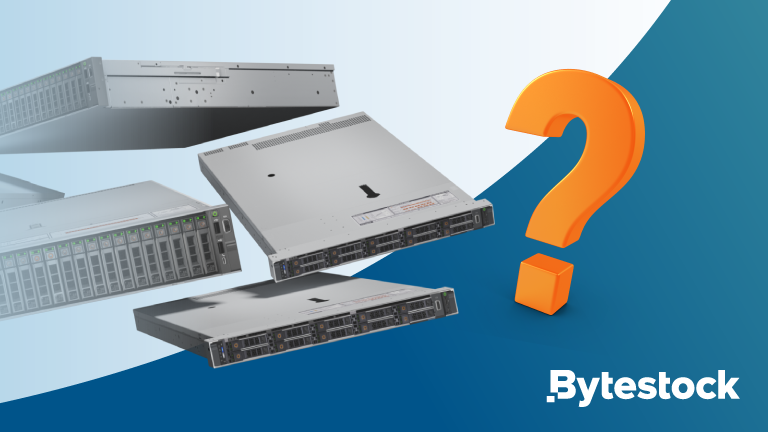Dell Technologies PowerEdge Servers have always been a go-to for reliable, scalable IT solutions,...
Dell 13th vs 14th Generation Servers

When it comes to Dell PowerEdge servers, the 13th and 14th generations stand out as cost-effective and highly configurable options. These servers are versatile, finding use in various applications, from file-sharing and corporate software services to organisational databases. But which generation is best suited to your needs? Let’s dive into the details to help you make an informed decision.
Identifying Your Server Needs
Understanding your server requirements is crucial to making the right choice. At Bytestock, we simplify the process, ensuring you find the perfect server for your business. Here are key considerations to keep in mind:
Budget
Your budget is a fundamental factor. Smaller, less powerful servers can cost a few hundred pounds, while high-performance servers can run into thousands, or even tens of thousands, of pounds.
Server Requirements
What tasks will your server handle? Assess your needs for RAM (Random Access Memory), processing power, transfer speed, and storage capacity. This ensures that you choose a server that meets your performance requirements.
On-Site vs. Cloud
Consider the pros and cons of both options. On-site servers offer powerful performance and fast speeds but require setup and maintenance. Cloud servers are more convenient but may sometimes offer slower transfer speeds.
Pre-Built or Custom-Configured
Pre-built servers are ready to use but may not always meet your specific needs. Custom-configured servers allow you to select precise specifications, ensuring optimal performance for your business.
Security Elements
Cybersecurity is a critical concern. Ensure the server you choose has robust cybersecurity capabilities to protect your business from threats.
Dell 13th Gen Servers
Released in late 2014, Dell’s 13th Gen PowerEdge servers, such as the R730XD, R730, and R630, come with innovative features to elevate your data centre.
Speed: I/O virtualisation options enhance internal bandwidth access and dynamically allocate it in real-time, ensuring efficient and quick data centre operations.
Accessibility: iDRAC 8 with quick sync enables remote server access via mobile devices using near field communications.
Dell 14th Gen Servers
The 14th Gen PowerEdge servers, introduced in 2017, include models like the R440, R740XD, T440, T640, and C4140. They offer a speed boost and new storage configurations.
System Management: iDRAC 9 provides up to four times better management and troubleshooting capabilities compared to the 13th Gen servers.
Sustainability: Enhanced airflow and reduced electrical consumption, thanks to the front mesh design, significantly improve the environmental footprint.
Choosing the Right Server for Your Data Centre
After comparing the features of the Dell 13th and 14th Generation servers, consider which system aligns best with your business needs. Both generations offer robust architectures, but your choice will depend on your specific requirements.
A 13th Gen server can deliver substantial functionality, while a 14th Gen server offers lower ongoing costs and superior troubleshooting capabilities, making it ideal for data centres handling multiple demanding applications.
Now that you understand the differences between Dell’s 13th and 14th Generation Servers, you’re better equipped to make an informed decision. Visit Bytestock to find your ideal server system or speak with one of our experienced account managers for more information.
By making the right choice, you can ensure your business runs efficiently and securely with the optimal server solution.





